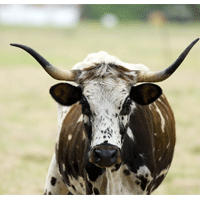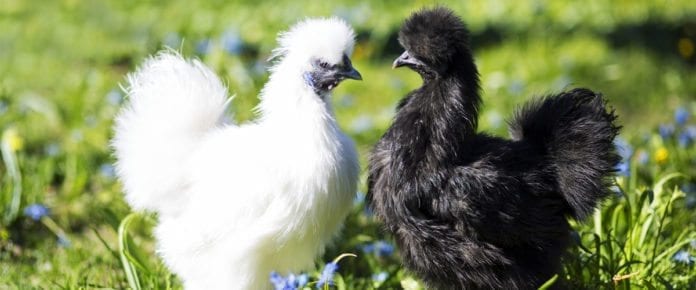From Silkie Chickens to Texas Longhorn Cattle and Tamworth Pigs, find out about today’s top breeds.
Silkie Chickens
The regal-looking Silkie Chickens with their fluffy coiffures are best known for their blue-black skin, meat and bones. The prized breed is considered a gourmet ingredient in China, Japan, India and other parts of Asia. They’re usually free-range and are described as having a gamier flavour than the garden-variety, factory-farmed bird. In traditional Chinese medicine, the Silkie breed’s meat is considered to have curative properties. Today, you’ll find contemporary chefs using the dark poultry in everything from rich broths, hearty braises and curries to soups accented with ginger or even prepared as a French-style confit.
 Texas Longhorn Cattle
Texas Longhorn Cattle
The long-horned cattle you might associate with dusty, old Western movies is likely the Texas Longhorn breed. Known to be direct descendants of the first cattle in the New World, they were brought over by Christopher Columbus. They’re considered a hearty animal that’s leaner in fat than other varieties — an unattractive characteristic long ago when beef tallow was a prized commodity. By 1927, the breed was saved from near extinction by the United States Forest Service. Today, the very characteristic that made the cows undesirable in the early 1900s is what makes them popular today — their lean meat. In fact, the meat is lower in fat, cholesterol and calories than most beef. Tender and flavourful, it’s a favourite when barbecued, pan-seared and served as a traditional steak with all the trimmings.
 Tamworth Pigs
Tamworth Pigs
The Tamworth pig, also known as a Tam or a Sandy Back, is among the oldest breeds alive, originating, appropriately enough, in Tamworth, U.K. The ginger or red-hued animals are thought to be descended from wild boars mixed with Irish pigs. Farmers and chefs often call this breed the “bacon pig,” because they can produce a high body mass without a lot of fat. They’re usually more expensive than conventional pork, because the pigs take 50-per-cent longer to reach market weight. Chefs prize this pork for its robust flavour and nose-to-tail meat potential. From pork chops to pork belly, thick slices of bacon, sausages and charcuterie, the pig continues to be one of the most versatile and favoured proteins.





















